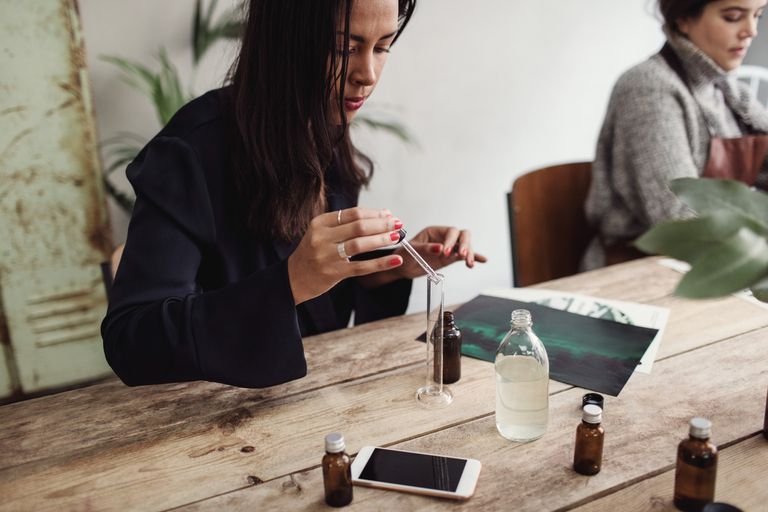The job of composing perfumes that will be sold is left up to an expert on perfume composition or known in the fragrance industry as the perfumer. They are also sometimes referred to affectionately as a “Nez” (French for nose) due to their fine sense of smell and skill in smell composition.
The composition of a perfume typically begins with a brief by the perfumer’s employer or an outside customer. The customers to the perfumer or their employers, are typically fashion houses or large corporations of various industries. The perfumer will then go through the process of blending multiple perfume mixtures and sell the formulation to the customer, often with modifications of the composition of the perfume. The perfume composition will then be either used to enhance another product as a functional fragrance (shampoos, make-up, detergents, car interiors, etc.), or marketed and sold directly to the public as a fine fragrance.
Perfume oils usually contain tens to hundreds of ingredients and these are typically organized in a perfume for the specific role they will play. These ingredients can be roughly grouped into four groups:
